Lisa Carver's Heart-Wrenching Writing
On Yoko Ono, Dissociative Identity, Parenting a Neurodiverse Child and all of the ways art relates ...
Lisa Carver is a unique author who creates out-of-the-box books in terms of both content and design. And I love them.
TRIGGER WARNING: There are a few quotes in here relating to the artist's childhood abuse.
Reconsidering Yoko Ono, Lisa Carver
In 2022, I suddenly fell in love with Yoko Ono. In my quest to learn everything that I could about her, I started with the book "Reconsidering Yoko Ono," by Lisa Carver. It's a well-written messy-style biography of the artist interspersed with some autobiographical information about how and why Carver interprets the artist as she does. The writing appealed to me enough that I wanted to see what else Carver has written. It turns out that my library doesn't carry her books so I turned to Amazon and ordered a few. They're strikingly different in style and content than the Yoko Ono book but I'm mesmerized by their heart-wrenching intensity.
Note: I thought at the time I would do a lot more writing about that book and also about Yoko Ono’s experience of mental health and art. However, as I dug into her life, what I found was that I don’t feel ready / equipped/ justified to interpret such a huge body of work from a woman who is a living artist that we know had trauma and loss and spent time in psychiatric inpatient care but who also doesn’t speak publicly much about her mental health. So that never happened. The only thing I ever really shared after reading Reconsidering Yoko Ono (a book I highly recommend!) was this:
Carver writes about how much loss Yoko Ono experienced - of parents, of children, of partners - and how she seemed to deeply integrate the idea that we are all one, that life is just energy, and so loss is painful and she will howl and moan (literally) in the experience of it but also it's not exactly loss.
Carver writes, "You can do it again in another place with another person, and it will be a new mix, coming back to the same experience through another door, and it will be different, and it will be the same."
I love that quote. Although I didn’t write more about that, I did dig further into Carver’s other writing.
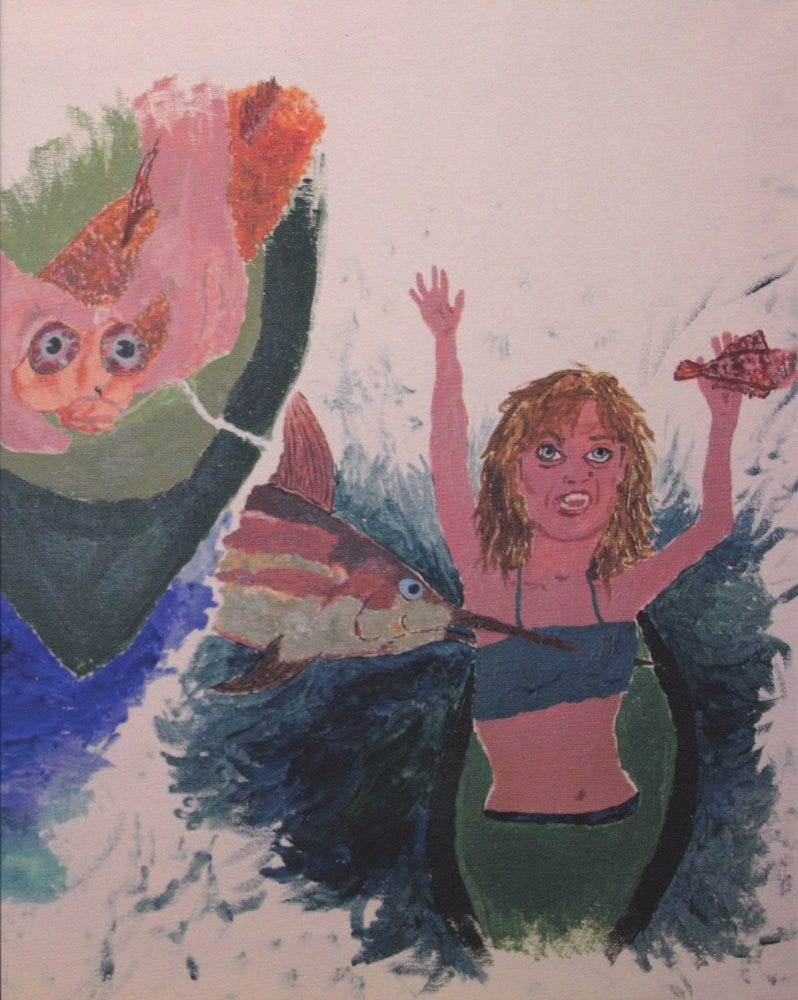
Untitled, Lisa Carver
The two books I've read through so far are Untitled, which is her art and writing about her own history of abuse. And Wolf the Artist, which is art by her son who lives with a condition that sounds similar to ASD and her written words about him. The latter is intense in a beautiful way. The former is intense in a horrifying way. Let's put it this way, Untitled begins:
"I think it was obvious to anyone who saw me perform on stage, or read any of my books, or witnessed me drunk, that I was molested, tortured, and starved as a child. It wasn't obvious to me.”
Intense. The book is a 9" x 12" style in full color, which is important because half the book is her own paintings. We learn that due to trauma she began to dissociate at a very young age. It was later, as an adult, in large part through painting, that she began to put back together the pieces of her memory, form her narrative, and begin to heal through self-understanding. Making the art and then interpreting the art in writing seem to both be part of the healing process. She writes:
"A lot of how I learned what happened to me and what I am came through painting it. I'd been a memoirist for 25 years, but I'd always been in control of the words I let out. The images, however, pretty much painted themselves, and then I'd look at it when it was done and say, "Oh, I see."
That's one of the most succinct descriptions I've seen about how visual art can heal when words fall short.
And here's an example of how understanding came to her ... She writes about how she noticed that "all the thumbs in these paintings are huge. When I saw them, I started to remember thumbs pushing into the hollow in my throat in the semi-dark in my toddler bed ..."
I've shared before about how working in a specific medium can sometimes take away the therapeutic power of it because it becomes your work, your norm, too automatic and learned. She speaks to this directly:
"I wasn't self-taught; I tried to stay not taught at all, for as long as I could. No reading instructions, no learning techniques, no improving. I never sketched out or even planned in my mind a painting; I tried to keep decisions out of it."
This is what I feel when I'm doing collages, whether image only or combining image and text. I'm an amateur at this as an artist. I'm aware that I don't even use the "right" materials (glues, etc.) I am a professional writer and I need a space where I am always going to be an amateur because that's where the creativity can come through uninhibited. I get this. She muses, "They always say 'write what you know.' What do you do when what you know is a lie?" Perhaps you require another medium.
The book is unlike any I've read before in terms of design and layout. At the beginning of the book is a list of Illustrations, which essentially serves as both a Table of Contents and an outline of her life. Within the pages of the book itself, we don't see any of these titles; there are no specific chapters. The paintings throughout the book don't have their titles listed on them, although often the text references the paintings. On each double page spread of the book, there is usually (not always) one half page or one full page of illustration.
Then there are two types of font. In one font, it's today's Lisa looking back. She's sharing her story with the knowledge she's gained about herself. She's sharing insights into the artwork that she created that led her to the knowledge she's sharing. If you're seeking descriptions about what's going on in the art on these pages, this is the font to tune into. In the other font, she's writing as if from a past self, writing in present tense about a past event of trauma. This gives us fuller insight into the experiences she had as she had them before the art and interpretation.
The book is rich in insightful discussion of trauma and Dissociative Identity Disorder as well as other aspects of mental health. I want to draw attention to a key thing she says about this disorder: "In my opinion the last word should be Order, as it's a filing system for memories and capabilities so the child is not overwhelmed." The book is also really rich in understanding art as a means of self-expression for self-understanding and healing.
Wolf, The Artist, Lisa Carver
The second book I got was "Wolf and the Artist: From Apocalypse Back" which is her son's artwork and her words. The style is similar in that it's a 9" x 12" style book and each page has an image of an illustration on it. In this case, there's no Table of Contents or List of Illustrations, but each illustration has a title on its page.
In the words, Lisa shares her perspective of what it's like interacting with Wolf. She describes her experience of him, how she sees him seeing the world, what she perceives as important or unimportant to him. Sometimes the words are very clearly linked with the images, sometimes it's not obvious at all. The images and the text each stand on their own but the collaboration of the two adds context to each.
Just as we can learn from Untitled about what it's like to live within the experience of trauma and Dissociative Identity challenges, we can learn from Wolf what it's like living with a child (now adult) with a condition that sounds similar to that of someone on the autism spectrum. (I don't know much about this condition but she says that he's missing the 22nd chromosome, which Google tells me is called DiGeorge Syndrome and which is sometimes misdiagnosed with, or has symptoms that overlap with, autism.)
An example, on a page depicting Wolf's drawing of "people watching the meteor shower," Lisa writes that many things people care about aren't important to Wolf: "Nothing cruel is. Nor hygiene, fashion, small talk. Turtles and swamp grasses and meteor showers and Bigfoot - that's what's real to Wolf."
And we learn a bit about what drawing offers to him. Asked why he often draws disaster, he responds, "To get it out of my head. I feel happy getting all that anger and scariness out of my life by drawing them on paper and then they're on the paper and not in my head." He goes on to share that a well-intentioned aide had told me he should rip up the drawings, the thinking being, of course, that then the bad things are gone for good. However, it didn't work for Wolf. He says, "When the drawings got ripped up, I felt like the Night People got out of the drawings and got released back into my mind. Or into the world."
We also learn that as he began to find a life that suited him better, the drawings became less disaster-filled. School was rough for him for a million reasons, not the least of which was that he loved being in nature (when he learned about Van Gogh, he said, "That guy really likes nature. I'd like to meet him." Lisa and Wolf's father advocated hard for him to be allowed to leave school in his mid-teens because it was so detrimental for him and instead he began to counter at an animal shelter and marine biology science center where, as Lisa puts it, "his outer world began to match his inner world for the first time." He drew Bigfoot and other creatures that had always interested them but "who had always before had to camouflage themselves from hunters who want to capture them" and now, "they came together in sunshine" in the drawings.
I love the final lines of this book:
"To have happy dreams, that's Wolf's rebellion: against society, against destiny, against the reality. He accepts nothing, creates all."

Art and Mental Health Takeaways:
In summary from the above article:
Words are an amazingly powerful tool to both understand ourselves and express ourselves. However, they have limitations for many reasons not the least of which is the boundaries of our own personal memory. Music and visual art can tap into that in ways that words can’t, offering a different type of healing. Both creating the art and also interpreting the art in writing seem to both be part of the healing process.
If you work regularly in any specific medium, you may need to try a different medium when using art to heal. You may need less control. There is therapeutic power in not being taught the “right way to do art.”
Titling your art pieces may or may not be important for your healing process.
The symptoms of mental health challenges are very often coping mechanisms designed to assist you. While they may no longer serve you, they exist for a reason, and it’s okay to honor them before letting them go.
Art can serve as a helpful way to get troublesome thoughts out of your head. They may feel safer on paper.
Well-intentioned suggestions for healing through art won’t always be right for you. Ripping up drawings or letters can be hugely powerful for many people … for Wolf, it was painful.
A few more thoughts from my re-reading of the essay above, which I shared with my subscribers about a year ago.
As I said, I love this quote:
"You can do it again in another place with another person, and it will be a new mix, coming back to the same experience through another door, and it will be different, and it will be the same."
I don’t have a specific belief about reincarnation or karma or coming into this life designed to learn certain lessons, although I think it’s all possible. I do believe in the essence of that … whether it’s this or the repetition compulsion from psychology or whatever framework you choose … I believe that we have certain thing we keep doing and learning over and over again. And I resonate with the idea that sometimes the person you’re with (be that partner or parent or whomever) can no longer be the one you have the experience with but you can have it again with someone else “and it will be different, and it will be the same.”
Re: the fingerprints in painting that brought back memories of abuse by hands:
As someone with memory blanks, Carver didn’t have the toddler memory in words, but it emerged in art, and then the art gave her words, and then the words gave her the power to heal. We can work back and forth in this way. And it won’t always be so obvious. For example, when I emerged from terrible depression in large part through crafting (a story I share in Crochet Saved My Life), I was simply creating squares of colored fabric, but almost magically as I stitched together loop after loop of yarn, I unraveled the mess in my head, re-stitching it into a much clearer narrative that helped me heal.
Finally, may we all make space for neurodiversity and varied life experience so that each of us can find more ability to match our inner and outer worlds. Trying to fit ourselves into specific tiny boxes only causes most of us pain and strife. Trying to fit others into those boxes shrinks our life experiences and relationships as well as their own.
Art and Journal Prompts:
I offer you some creativity prompts that you can use for journaling, creative writing, as a start to an art project, or however you may see fit.
In what ways have you experienced the same lessons through more than one relationship or experience?
Choose an experience from your past. Write about it in two fonts (or two colors) … one from the perspective of being in that moment and writing in that present’s tense and the other from being in this moment with your fully lived experience and writing about what it means to you as you look back on it.
If you’ve been assigned any type of label, how might you change that label to honor your strengths and full self? (As inspired by Carver saying of Dissociative Identity Disorder that the word should not be Disorder but Order “as it's a filing system for memories and capabilities so the child is not overwhelmed.”
Collaborate with someone who works in another medium. Choose a mental health topic or theme and come at it each from your own perspectives. How does that change your experience of it?
Respond to Carver’s question: "They always say 'write what you know.' What do you do when what you know is a lie?"
Imagine yourself in the shoes of someone living with a condition or experiencing a different perspective from your own (such as Dissociative Identity or DiGeorge). Write a short story or create an artwork that reflects their unique outlook on life and how it has shaped their experiences.
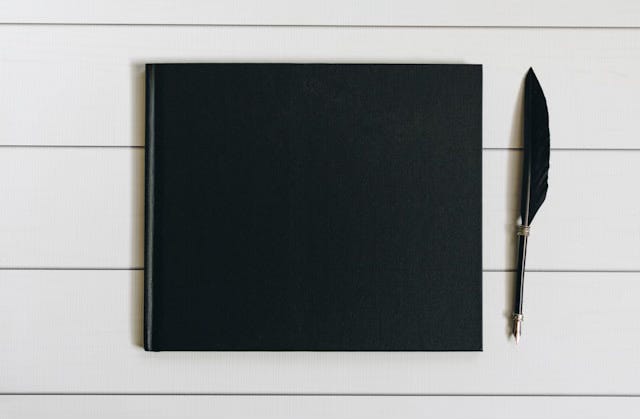
Related Tips for Using Creativity to Improve Wellness:
In addition to the above prompts, you might want to try some of these creative activities to help improve mental health:
Choose an art medium that you don’t use very often. Allow yourself free expression, don’t try to learn too much about “how to do” the medium and just see what emerges. Once finished, see if you can use words to uncover more about what the piece means to you.
Write an outline of your life history using a list of what the titles of illustrations would be if the whole thing was illustrated.
Write or draw a list of things that are important to other people but not to you. And another of things that are important to you even if others don’t seem to find them important. Draw inspiration from Wolf: “Nothing cruel is (important). Nor hygiene, fashion, small talk. Turtles and swamp grasses and meteor showers and Bigfoot - that's what's real to Wolf."
Create an art piece inspired by the concept of "coming back to the same experience through another door." Explore how different mediums, techniques, or perspectives can offer new insights and interpretations of a single theme or idea.
Related Tips for Coping with Mental Health Symptoms That Impact Creativity:
Do you have symptoms that are impacting your ability to create? Here are some additional wellness tips:
Consider whether any symptoms of habits you have were coping mechanisms that served a purpose in the past but no longer serve you. Identify what they helped you with and, if that’s something you still need help with, see if you can choose a coping mechanism you feel is better suited to your authentic needs. If the symptom isn’t easy to change, make space for it to exist how it does. For example, I go into a numb state of hypoaraousal sometimes. It’s protective. It served me as a child in traumatic situations. It doesn’t happen as much now because I practice a lot of preventative self-care. But if it does happen, I can’t stop it, so I just acknowledge that that’s what is happening and meet my needs for quiet downtime in that moment.
Practice self-compassion and self-acceptance. Be gentle with yourself. You are wonderful and worthy exactly as you are.
Practice resilience and find meaning in adversity. Cultivate resilience by reframing challenges as opportunities for growth and learning. Look for the lessons and meaning within difficult experiences.
Foster connections and support. Seek out like-minded individuals who share your interests and values. Connect with communities or groups centered around mental health, art, or similar topics. Building supportive relationships can provide a sense of belonging and understanding.
Affirmations, Quotes, Meditations, Etc.:
Reading or writing affirmations / mantras can be very powerful. In relation to this article, play around with writing them down (I usually do ten times each for the one I’m working with) and then with simply thinking them or reciting them out loud and see what feels best for you.
A few lines directly from my own writing above or quoted from Carver that work well as affirmations:
I can do it again.
It will be different, it will be the same.
Oh, I see.
Accept nothing, create all.
I have happy dreams.
A few others:
"Loss is transformation; pain fuels growth."
"My creativity heals and empowers me."
"Through art, I find self-understanding and healing."
"I embrace my unique journey of resilience."
"Authenticity is my rebellion against societal norms."
"My creative expression honors my lived experiences."
"I release the need for perfection in my art and self."
If you read this far, perhaps you liked the work. The work does take work. It only continues with support, so please consider subscribing. My annual rate starts at $10 per year.
Additional Resources:
Yoko Ono’s Art of Defiance, a New Yorker Article
The Sunday Rumpus Essay: Lisa, Wolf, and The World
Interview: A Conversation with Lisa Carver, author of 25 Lives from Hippocampus Magazine




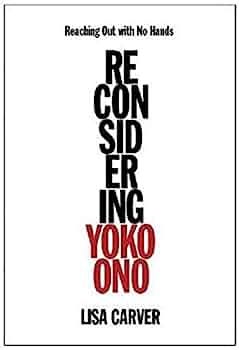
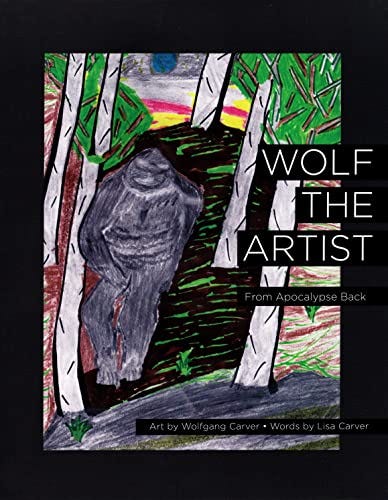
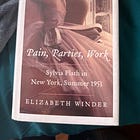


I love this post, Kathryn, so much richness to absorb. I will return to it again. So much pain to release through writing, although I'm not in a place of creating to destroy. I asked the question recently around how people feel about burning notebooks, diaries and memories. I can understand pain so dark that this would be a release. A real ponder...
‘The symptoms of mental health challenges are very often coping mechanisms designed to assist you. While they may no longer serve you, they exist for a reason, and it’s okay to honor them before letting them go.’ This is beautiful, Kathryn- and so true.